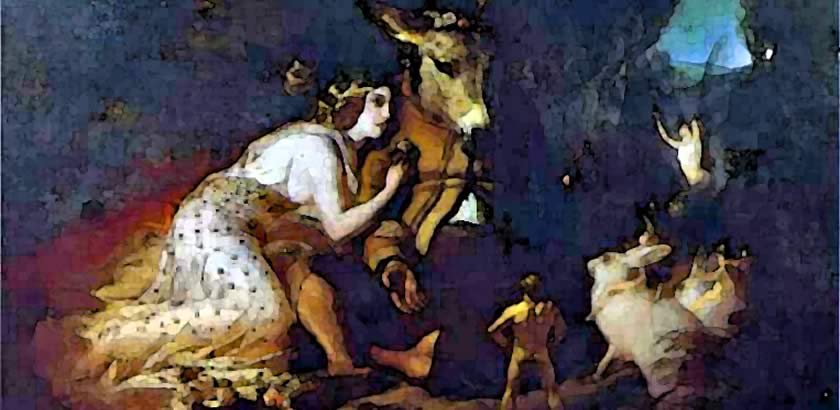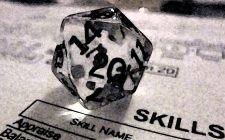To the person in another thread who argued with me that a classic D&Desque, high fantasy setting requires requires a sexist society for because of your sincere need for realism and internal consistency.
I have a couple things to say.
They’ve probably been said before by other people in other conversations, so I was just going to ignore your comment and let us agree to disagree. However you linked back to your argument on a different comment that I wasn’t even a part of.
You might do so again. I also imagine, since you weren’t the only one to make that argument, you won’t be the last one to do so. So I’ll put my reasoning here for posterity and link back to it in every future tangent where someone tries to convince me that realism forces them to have a sexist culture in their high fantasy, D&D-esque setting. Because of the Inevitability of Biology.
On Internal Consistency
The first big problem from my point of view is D&Desque settings are, on a fundamental level, not internally consistent.
For example, if people are able to cast the spells available to even low-level players and NPCs, then you are drastically changing all kinds of things about the society that D&Desque settings completely gloss over. It beggars belief that changing something so fundamental would still result in a generically medieval European culture. Mythcreants has a quick look a few classic issues with high magic if you want somewhere to start understanding the existing internal inconsistencies of a D&Desque setting.
Not mentioned in there is the relative homogeneity of languages and beliefs, especially among non-human races. If you look at how many languages and cultures there were among real pre-modern human cultures, you’ll get a sense of how unrealistic the list of languages is that D&D has. Or take the number of huge top predators in D&D—there are too many to be supported by the ecology. There’s a reason all the real world big animals eat plants and tiny animals; dragons are ecologically unrealistic simply on a food web level, to say nothing of the aerodynamics of flight. If you google or really start to think through how D&Desque setting works, you’ll find other issues, I’m sure.
So, there are many clear breaks in realism, but we accept them because we make trade-offs between realism and fun and familiarity and gameplay. D&D is fun.
So. Own it.
If you want a D&Dish setting at all, that may mean you want realism, but only in some ways. And you may want to draw on historical or legendary sources, but only in some ways. And one of things you may want to have is the gender norms you’re comfortable with. But that says a lot about your cultural expectations and preferences and not so much about your absolute commitment to internal consistency. Because traditional high-fantasy/D&Dish settings are not internally consistent on even a cursory examination.
And Historical Realism
And yes, on average, men are physically larger and stronger than women, especially in upper body strength. And they are biologically less occupied with pregnancy and early infant care. However individual people can be bigger or smaller, weaker or stronger than average for their gender. So if you look at actual real world pre-modern cultures, you’ll see a range of ways that they understood genders and a range of ways that they assigned or violated gender norms.
Even without introducing things like magic and non-human societies, there are cultures that you’re probably familiar with that had well-known traditions of women as warriors (such as the Norse) and women in positions of leadership (such as the archaic Spartans). Even cultures with strict, patriarchal gender norms universally also have women breaking those norms (such as Eleanor of Aquitaine, Joan of Arc, Queen Elizabeth, or Boadicea).
And that’s not even going beyond well-known, early European examples. There are cultures that have been matriarchal or who assigned men and women distinct roles yet equally powerful roles or who assumed more than the two genders. Biology is only inevitable the way you’re implying if you put your fingers in your ears and say “lalalalala” to historical counterexamples.
Now, it’s more common to have societies with men having greater power than women, but that’s different than saying that it’s inevitable or the only possible way a pre-modern society works.
So you could have an internally consistent, pre-modern culture that had women as warriors or leaders or whatever right alongside men, but you choose not to because you don’t want to and that’s fine with me. You can have whatever kind of world you want. I can, too. Just own it. Don’t pretend it’s an inevitability of biology that you’re helpless to imagine your way out of. Because if you can pretend that dragons make ecological sense and that the economy isn’t entirely messed up by the adventurers and that healing magic doesn’t change everything, then you could imagine the possibility of basing your setting’s gender roles on something other than Tolkien derivatives and 1970s sexism. But you don’t want to. Just own it.
But More Importantly
This is already too long for a post that I wasn’t going to make in the first place, but now that you got me going, I have to say it. D&D-esque settings have a lot of non-human races. Even if I bought the realism argument for humans (see above; I don’t), there’s no logical reason why elves and orcs and halflings, and so on also need to have the exact same sexual dimorphism which leads to the exact same gender norm issues (except drow, of course, whose evil, unnatural, manipulative women lead them to horror).
You could imagine elven women with the opposite size differential so that the men were the protected ones and the women took their bows and swords in hand to conquer the world. Or that orcs have three genders, and we only see the active neuters. But if you want to imagine that the made-up races ALSO have (relatively) big, strong men protecting and leading the passive graceful women, then just admit that’s how you like it. You can’t fall back on a biological argument for biology you’re making up whole cloth.
And!
The “inevitability of biology causing sexism” argument really breaks down when you introduce a non-human races of different sizes. I mean, orcs are a lot bigger and stronger than humans. If you argue that women can’t be fighters because they’re smaller than men, then why are humans able to be fighters at all in a world with orcs? By your argument, any world with orcs would force humans to be a helpless, passive species, fit only for decoration and subservience. And halflings certainly shouldn’t be adventurers or leaders or anything at all. I mean, even a human woman is twice their size. By the “inevitability of biology” argument, halflings should at best be some sort of protected underclass, and humans should walk like gods through their territory. But that would be a very different setting than what most people want to play. So we imagine that they make up for smaller size in other ways, and we imagine that humans can go toe-to-toe with half-orcs because of…reasons. In the same way, we could imagine that women could be leaders and fighters and scholars and whatever, too. If we feel like it. And if you don’t feel like it, that’s fine. I doubt you’ll be inviting me to play in your game, so there’s zero reason why you have to change it to adjust to my preferences.
But please.
Don’t jump on my thread and pretend that that’s logic rather than preference.



